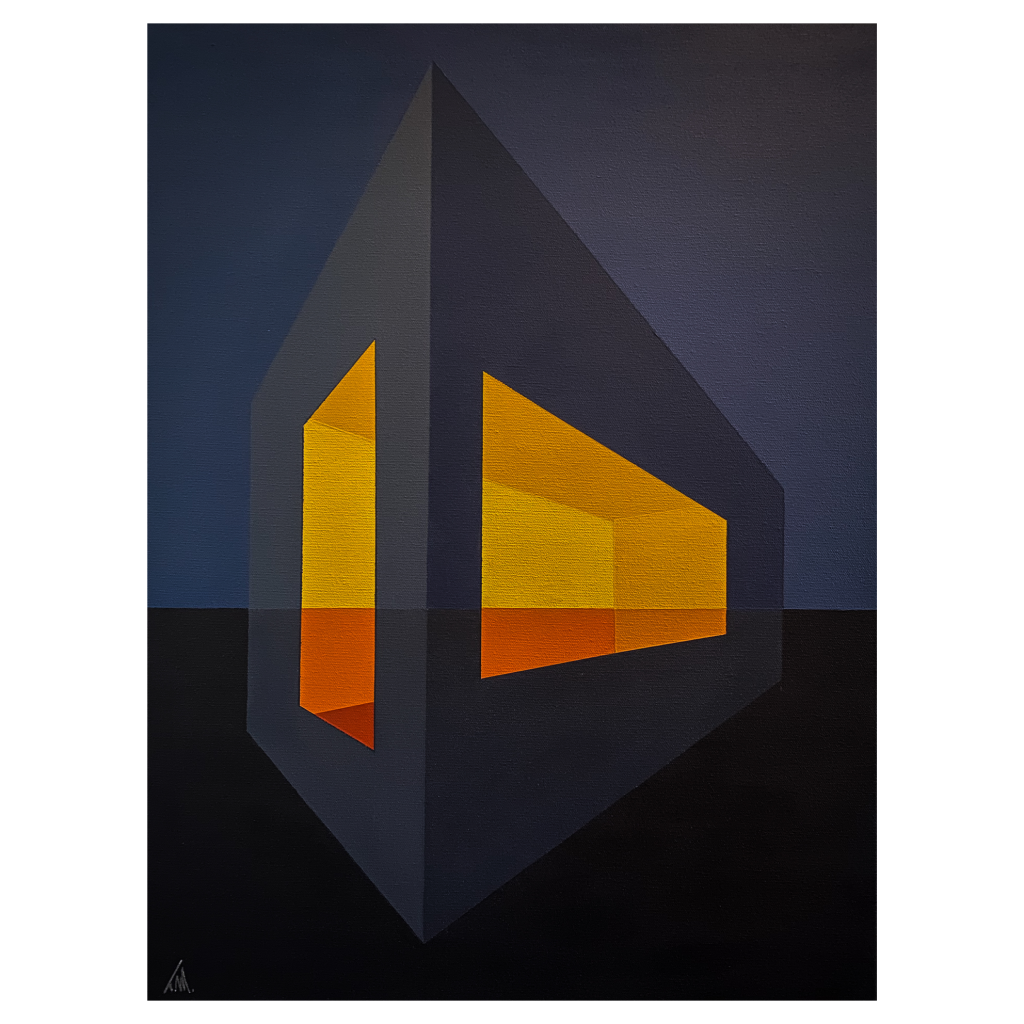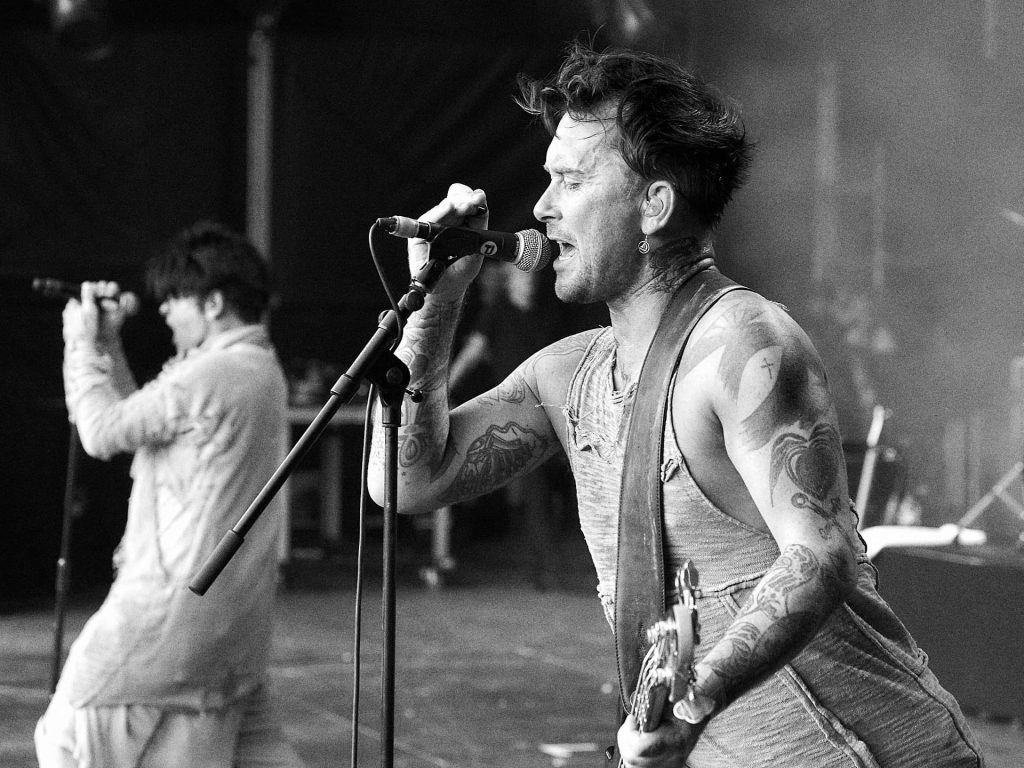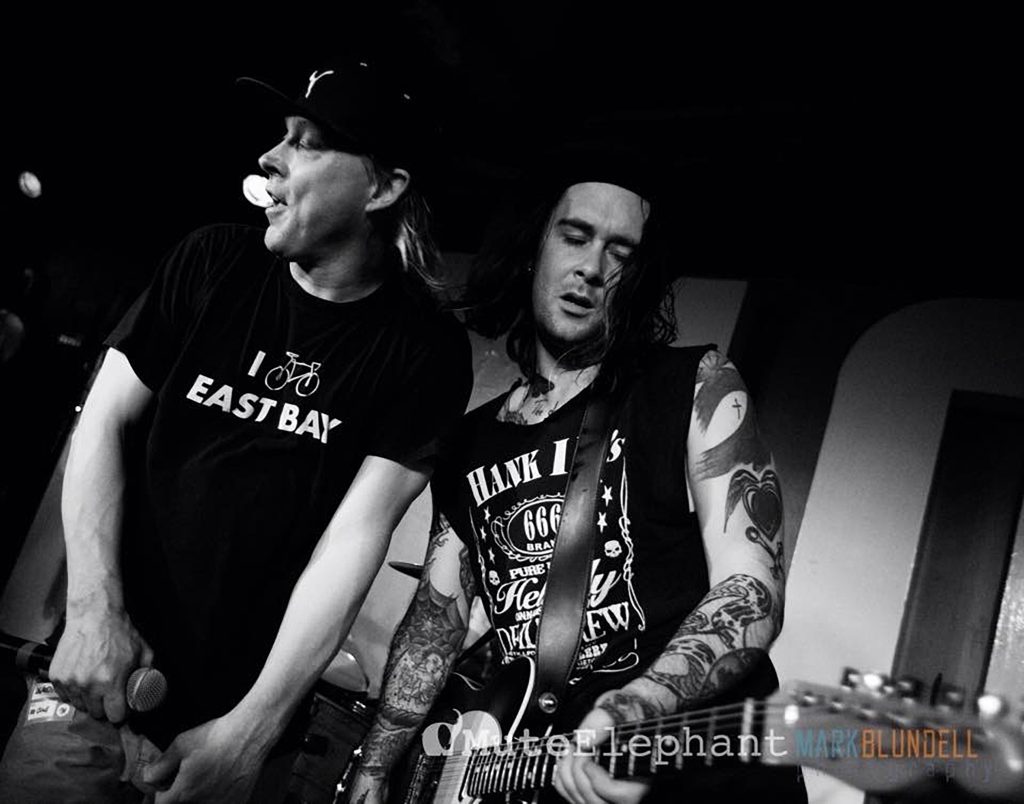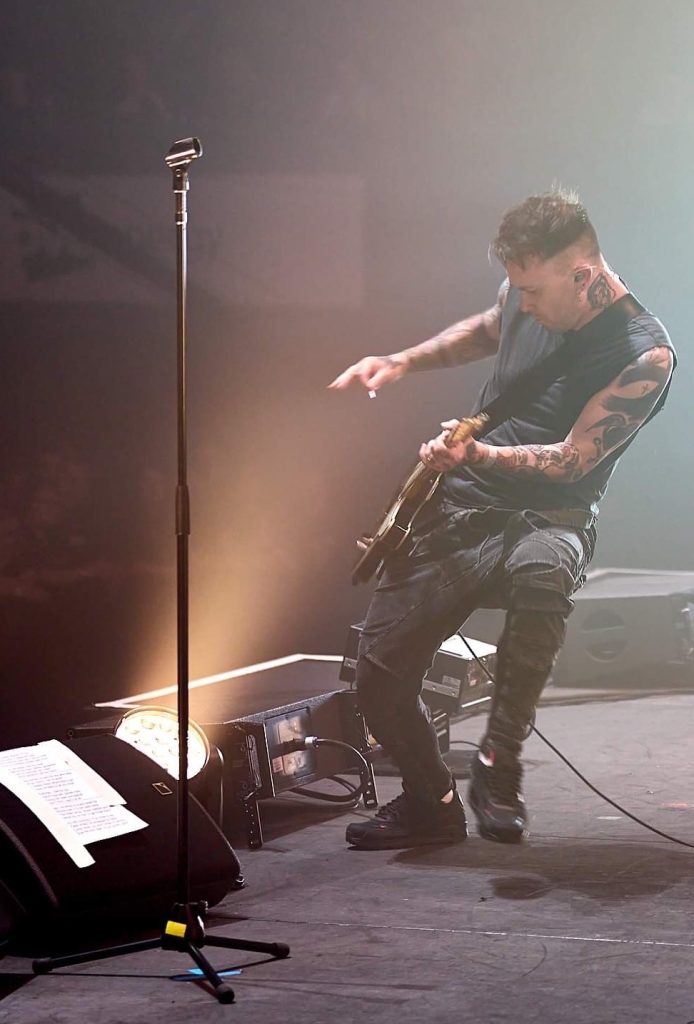Most of us consider ourselves pretty fortunate if we happen to be half decent at one thing, but there are a select few individuals whose talents extend to multiple disciplines.
One member of this rare breed is Tim Muddiman who, after decades performing with Gary Numan, as a solo artist and with Pop Will Eat Itself, is now releasing The Geometrical Swing – a hardback book featuring 50 of his art works.
Produced between 2019 and 2022 Muddiman’s colourful abstract paintings draw inspiration from the world around him, architecture and design, but also street art and graffiti.
He began working on the pictures after deciding to lay down his guitar at the end of a triumphant but gruelling world tour with Gary Numan, who generously contributes a foreword to his former bassist’s new book.
Here Muddiman tells Matt Catchpole about his transition from musician to artist, how he first fell in love with painting and his battle with chronic tinnitus, which he likens to sticking his head in a jet engine.
You cite Jackson Pollock, Salvador Dali and the Abstract Impressionists as influences – what is it about these artists that grips you?
As a teenager I was in love with the energy and colour used by Jackson Pollock and at a similar time, street art from photographs of New York subways found in the back pages of Hip Hop Connection magazine. With graffiti it wasn’t so much the jagged or bubbled letters, but as with Pollock it was the splashing of contrasting colour and the rebellious and non-conventional energetic atmosphere of the pieces that demanded my attention. Both triggered a response deep inside and transported me far away from what was on offer in the middle English town I grew up in. Both had a taste and a feeling that was unique, powerful, and fixating. As I learnt more and was exposed to more artists like Dali from The Eclipse rave flyers and later Picasso, Bernard Buffett, and more abstract impressionists my tastes were formed. In more recent years Francis Bacon has had a similar effect on my romantic imagination and wandering attention.
What led you to use geometric patterns in your art?
It was by chance. I also wouldn’t call the work in the book strictly geometric, hence the title, The Geometrical Swing. The swing is my freedom to go from one style to another within a straight and hardedge illustration. I stumbled on that style though no intention but with plenty of purpose. I did a painting called Jack House that has 10 separate connecting sections that make up the image of an internally glowing house. I related the work to belonging and security. Something that had lacked in my life for some time. The work that was to follow was an extension and a progression from that first piece be it architectural or abstract.

In the book, you show some of your preparatory sketches. Do you have a firm idea in your head about what a work is going to look like when you begin, or does it take shape on the canvas?
Every time. I allow there to be some room for change when transferring to canvas, but I start with the image in my head, then sketch it on paper and then allow time and taste to choose the colour after the framework is down before I paint.
The paintings in The Geometrical Swing were all made during the pandemic – a strange time for many, particularly artists – did it influence your work in any way?
For years when not touring I have generally lived a very secluded life in studios of some sort. When the pandemic emerged and then the lockdowns started it was obvious that more people were now living and working in a similar way to myself and there was something profoundly comforting about it. I could see people in their houses working and looking out of the windows. I felt like I had imaginary colleagues albeit behind closed doors. I carried on as usual, but I don’t think the actual lockdowns, or the pandemic influenced my work in any way. I was already on a mission and in too much of a flow to be distracted.
There seems to be a contrast in the freedom of expression you say you allowed yourself in developing these pictures and the hard-edged rigidity of the geometrical shapes within the finished works. is that conscious tension within your creative process?
I have just given myself boundaries. Boundaries that are made to provoke feeling and boundaries to be broken.
You say the desire to paint gripped you like a new obsession – are you a naturally obsessive personality do you think?
I used to think I was obsessive, but that explanation has now grown tired. I just fall for things and become passionate and engrossed. I think it’s like catching a new wave from time to time and trying not to fall off. To me being an artist is about doing and not over intellectualising. Always allowing feelings to create images and not to satisfy anything else including the art world. I love the creation of new work and discovering new directions without dismissing the direction you’re already on. Directions have paths and those paths are to be walked along. I do wish we lived for 1,000 years or more.
In his foreword Gary Numan says he sensed that music did not bring you the creative satisfaction you were looking for – was he right about that?
Music has been my everything since birth and that’s why I ended up by proxy as a musician. I don’t think I ever planned how I could be a rock star and I didn’t want to drive home a certain message or sound in song, but I did fight every day for many, many years to not do anything else to survive other than play my guitar, immerse myself in the arts and think without boundaries about the arts. As much as being a musician has taken me to extraordinary places mentally and physically, it has equally damaged parts of my life in profound ways. The satisfaction that Gary mentions could be just that. I have surrendered to music with every aspect of my being for as long as I can remember but as I grow older, I feel safer painting. I feel less vulnerable and less exposed. I didn’t understand the music industry and I sure as hell do not understand the ‘art world’ but I do understand how to be myself. Painting allows that in a new and exciting way daily, where I often felt lost at sea being a musician.

Gary appears to be quite obsessive in the way he approaches music, how did you find him to work with?
I wouldn’t necessarily agree that Gary is obsessive. Through observation I’d say he is very calculated and contemplative about his music and the decisions relating to his career. I’m not sure if that’s always been the way but I played in his band in a long period of growth and If I had half of his professionalism and wisdom, I would have probably started painting more seriously a long time ago.
Did you enjoy the life of a touring musician?
I can safely say I enjoyed 99.8% of all the shows I’ve ever done. I always gave it 100% and was committed. I started to really struggle with being away all the time though and towards the end it was harder to live with the insecurity of it all. My personal life was disturbed many times and it was like picking it back up off the floor every time I returned from a tour. With age it just became unsustainable to tour year in and year out without a good balance that I needed to be able to survive
How serious is your tinnitus, when did you first notice it and how does it affect you?
My tinnitus is horrendous. No joke. It’s with me 24 hours a day. I must be careful with certain foods and red wine when the volume of the stereo ringing in both ears can be turned up even louder. If I listen to just one loud song in the car it can negatively affect me for days. My tinnitus is mostly self-inflicted by having music too loud in the studio, in the car or in my headphones since being a child. There were also two other occasions that I can pinpoint where irreparable damage must have happened. I was playing a Rockabilly gig with my band Junkyard and a monitor hanging from the ceiling by chains was so loud, I lost my balance and vision and had to stop playing for a while. It was incredible. For days I couldn’t hear anything out of my left ear. And then a similar situation happened a short time after at a festival with a floor monitor. It was damage on damage and the ringing hasn’t stopped since then. I can only liken both situations to placing your head inside a jet engine. An indescribable violent noise that will only destroy. I haven’t done that but can imagine. I have a prescription for hearing aids from about ten years ago that I still haven’t cashed it in.
You joined the new line up of grebo gurus Pop Will Eat Itself in 2011, with original member Graham Crabb and Mary Byker of Gaye Bykers On Acid, how did that come about?
Through a friend of a friend.

Were you a fan of the band before you joined?
I wasn’t a fan but was aware of the band, their legacy and the cross over between hip hop and punk. I did soon become a fan though and soon realised that Graham Crabb was a hugely underrated and very clever lyricist. He has a certain way of explaining himself with interesting topics he sings, raps or talks about and they are often important, witty, and full of interesting riddle. The shows that I played with the band were fantastic and I think fondly of them.
Which gave you most joy, playing bass with Gary Numan, guitar with PWEI, or your own solo work?
Each one is too different to compare but the riders were always the best with Gary.
You say in the book that you hope a certain rhythm is found within the collections of works and their descriptions. If you had not first been a musician, do you think you would still have become a painter?
It’s a hard one to predict but I imagine so. I have always been led by what I love so I guess it was inevitable.
You have taken a break from music; do you see yourself picking up a guitar and pursuing music again at any point?
I do miss it. More so recently than in the last three years. I have a nice set up in my studio but rarely have chance to play which is upsetting. I have to be really careful with my hearing, and guitars and live music are loud.

Do you listen to music when you are painting and if so what?
I do. But quietly. I have various playlists that I add to often and more recently I have been listening to classical music. I can feel a certain love affair growing with classical music but won’t be joining an orchestra any time soon. I also listen to audio books, Radio 4 and sometimes listen to documentaries on TV.
How do you see yourself developing as an artist in the future?
I feel a direction change about to happen. I’m romanticising about developing in other areas of painting and particularly work with a strong narrative and with oils. I’d also like to explore writing and other performance arts at some stage too.
- The Geometrical Swing is out now in hardback through Albany Publishing from Amazon and Tim Muddiman’s own website, where signed copies and special editions are also available
- For more on Tim Muddiman visit his Instagram, Twitter and Facebook pages



